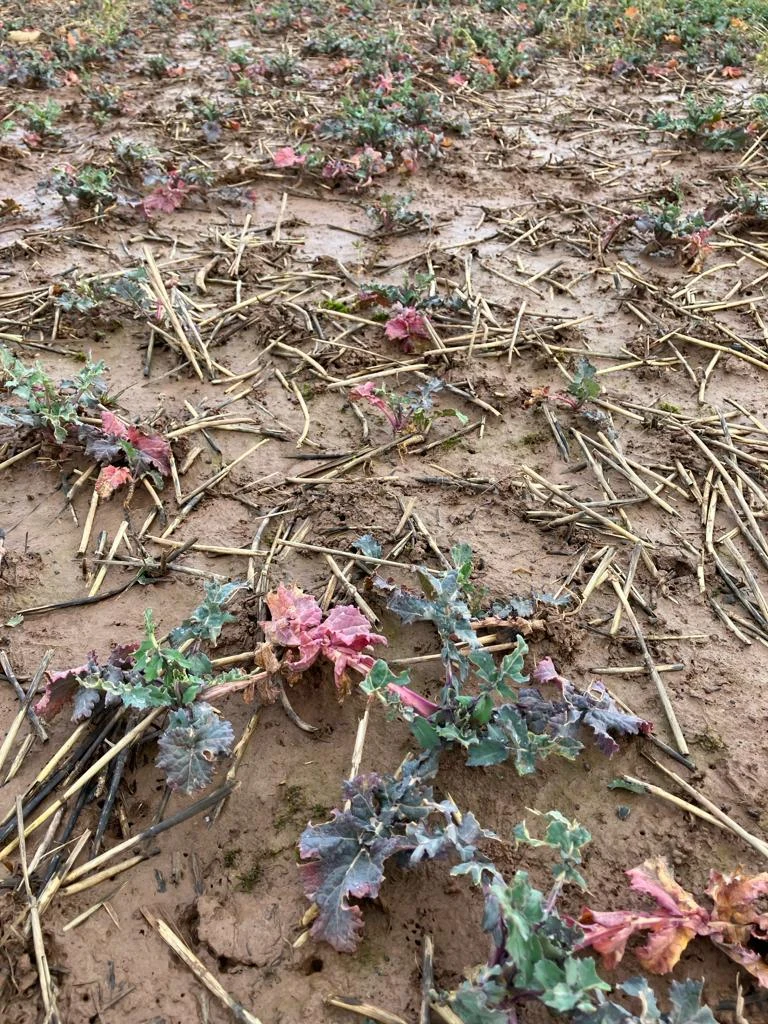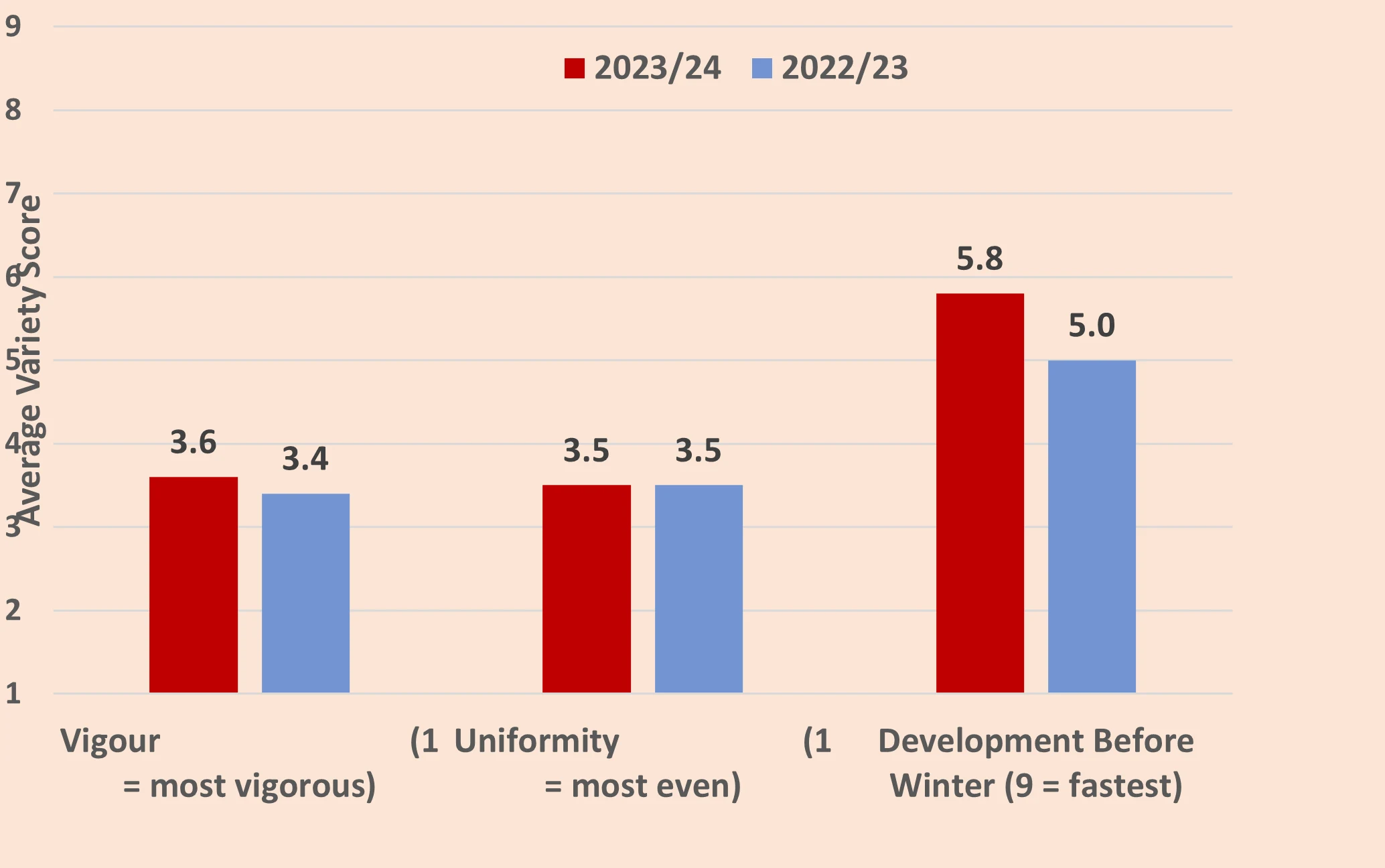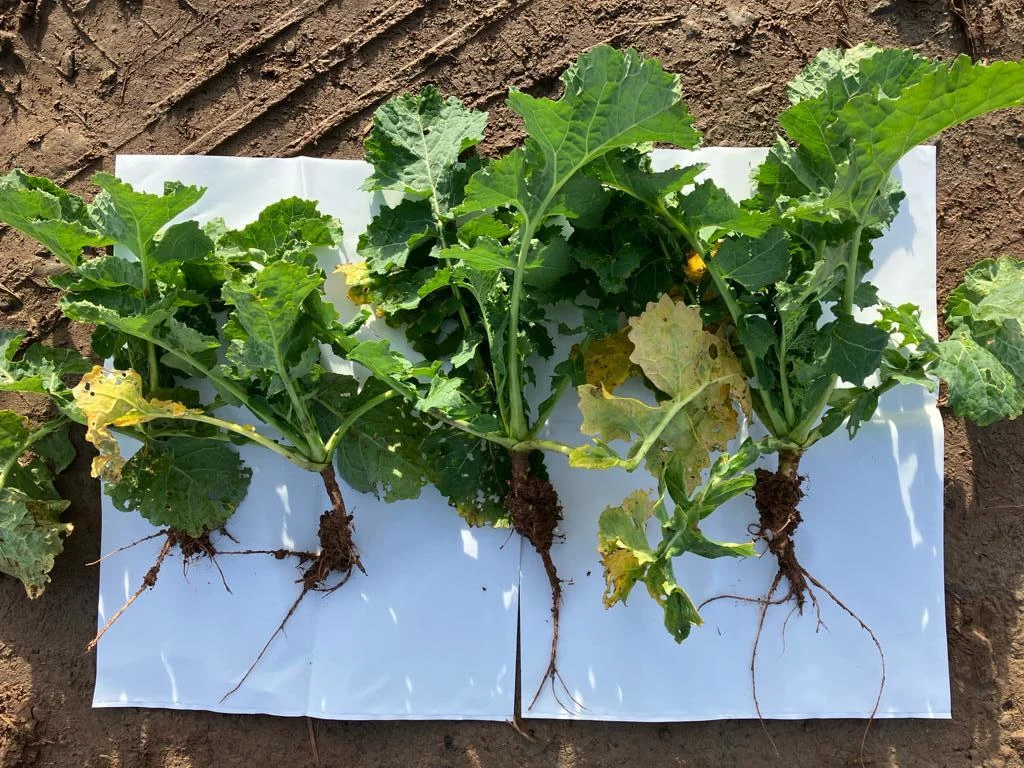
As daylight hours lengthen, it is time to start assessing oilseed rape crops’ potential for a strong spring restart.
Author
| 13th February 2024Tags
We Highly Recommend:
OSR
DK Excited
DK Excited has the agronomic flexibility to make the most of seasonal uncertainties with the greatest reliability.
Read moreOSR
DK Exstar
Continuing to prove the value of all-round agronomic strength with reliable trial and farm performance at the highest level.
Read more3 things to consider at OSR restart
In common with other autumn-drilled crops, early season conditions have been less than kind to oilseed rape, contributing to crop failures in some cases and resulting in generally smaller crops coming out of winter than seen last year. But the ability of current hybrid OSR varieties to overcome difficult conditions should not be overlooked.
With a reduced supply of oilseeds expected across the UK and Europe and higher than normal levels of overall spring plantings because of the persistently wet weather, careful crop assessment and a measure of patience this spring could pay dividends, suggests Bayer trials manager Richard Williams.
Responsible for Bayer’s extensive Dekalb oilseed rape strip trials programme, which underpins its National Hybrid Proving Programme, Richard has seen first-hand the detrimental effects of the wet weather, as well as cabbage stem flea beetle and slugs. The programme for 2023/24 extends to 12 established trials on farms from Fife to Norfolk and across to Wiltshire, with a further nine sites lost under this season’s challenging conditions.

Key parameters
But as crops emerge from winter, assessment of three main crop parameters - plant population, rooting and CSFB pressure - combined with a realistic appraisal of the return on investment required, can do much to inform decisions on whether to retain or rip up oilseed rape crops this spring, he maintains.
“Have we got enough plants there? Are they viable? Is larvae pressure too high? All these questions need to be considered as there are still a lot of inputs to go onto oilseed rape,” he says.
One key observation to date from this season’s strip trials is that the autumn development and plant populations of the Dekalb Ex hybrid varieties are very similar to last season at around 30 plants/ m2, as are their average vigour and uniformity scores, suggesting crop potential is at least as good as last season. (Fig 1)
Fig 1
- 2023/24 season establishment

The average vigour and uniformity of the Ex hybrids in the 12 established strip trials is very similar to last season.
Ability to compensate
“We know from last year’s trials that a population of 25-40 plants/m2 is needed for the best performance but that less than 25 plants/ m2 can give acceptable results with many of our hybrids,” says Richard. “What this means is if you've got a variety which is has been stripped back to say 10-15 plants/ m2, it has the ability to compensate through more growth and more branching; you will end up with a bigger plant and you can still get a good yield.”
The wet weather of recent months has taken its toll, he acknowledges. At some of the strip trials sites crops have gone backwards where they have had persistently wet feet, particularly on headlands.
“They will come back but the biomass has shrunk. The root is still there and so is the growing point but most of the foliage is gone. However, we know from our site at Callow in Herefordshire that, if rooted sufficiently well, hybrids like DK Excited can give reasonable yield even if defoliated completely in January,” says Richard.

DK Excentric (right) v Campus - Callow 01.02.24
“In last year’s strip trials, on the four sites with the lowest spring populations, our six current Ex varieties had an average plant count well below the optimum at 18 plants/ m2 but yielded an average 3.61t/ha at 45.1% oil, for a gross output of 3.89t/ha.
“On the site with the lowest plant population – an average of 16 plants/ m2 – the varieties averaged 3.71t/ha at 45.4% oil, for a gross output of 4.01t/ha. Joint stars of the show were DK Exstar, yielding 3.79t/ha from 15 plants/ m2 and DK Excited yielding 3.91t/ha from 14 plants/ m2.”
In soils where there are no pre-existing issues, OSR rooting is generally good, says Richard. However, in some direct drilled crops, more variable establishment as a result of areas of compaction, is a cause for concern.
Cabbage stem flea beetle considerations
Cabbage stem flea beetle continues to be a serious threat and with 2023 harvest delays meaning fewer oilseed rape crops were drilled early, more crops emerged into what proved to be an early September CSFB storm for many.
The need to walk crops regularly and check for larvae cannot be overstated, says Richard, but their presence may not necessarily condemn a crop to destruction if it has a reasonable plant population and good root structure.

“A couple of years ago, we had a trial in Basingstoke that was littered with larvae, literally every variety. Yet it flowered evenly, and it yielded very well. If plants are looking okay, but they've got lots of larvae, give it another two or three weeks,” he says.
Patience should be the watchword in the next few weeks, he suggests.
“If you've established 25 plants/ m2 and have decent roots and don't have a lot of cabbage stem flea beetle damage, things are actually looking quite good,” he concludes.
We Highly Recommend:
OSR
DK Excited
DK Excited has the agronomic flexibility to make the most of seasonal uncertainties with the greatest reliability.
Read moreOSR
DK Exstar
Continuing to prove the value of all-round agronomic strength with reliable trial and farm performance at the highest level.
Read more